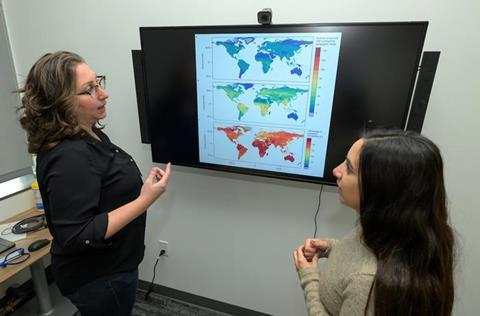A new artificial intelligence tool could aid in limiting or even prevent pandemics by identifying animal species that may harbor and spread viruses capable of infecting humans.

Created by Washington State University researchers, the machine learning model analyzes host characteristics and virus genetics to identify potential animal reservoirs and geographic areas where new outbreaks are more likely to occur. The model focuses on orthopoxviruses — which includes the viruses that cause smallpox and mpox.
READ MORE: Climate change drove the emergence of West Nile virus in Europe
READ MORE: Vietnam hotspot IDed for viral disease emergence
The researchers recently published a study on their work using the model in the journal Communications Biology. Their findings could help scientists anticipate emerging zoonotic threats and, importantly, be adapted for other viruses.
“Nearly three-quarters of emerging viruses that infect humans come from animals,” said Stephanie Seifert, an expert in viral emergence and cross species transmission and an assistant professor in the WSU College of Veterinary Medicine’s Paul G. Allen School for Global Health who helped to lead the project. “If we can better predict which species pose the greatest risk, we can take proactive measures to prevent pandemics.”
Potential hotspots
The model identified Southeast Asia, equatorial Africa, and the Amazon as potential hotspots for orthopoxvirus outbreaks. These regions not only have high concentrations of potential hosts but also overlap with areas where smallpox vaccination rates are low. While the smallpox vaccine provides cross-protection against other orthopoxviruses, vaccination efforts stopped after smallpox was eradicated in 1980.
The study also identified several animal families as likely hosts for mpox, including rodents, cats, canids (dogs and related species), skunks, mustelids (weasels and otters) and raccoons. The model correctly excluded rats, which have been shown in laboratory studies to be resistant to mpox infection.
Katie Tseng, a veterinary medicine graduate student and the study’s first author, noted the model not only demonstrated higher predictive accuracy than previous models, but it can be useful in predicting hosts for other viruses as well.
“While we used the model specifically for orthopoxviruses, we can also go in a lot of different directions and start fine tuning this model for other viruses,” she said.
Missing factor
Pilar Fernandez, a disease ecologist and assistant professor in the Allen School who helped to lead the project with Seifert, said previous machine learning models used to predict potential hosts for orthopoxviruses relied on the ecological traits of animals, such as habitat and diet, and other characteristics that influence their interactions with the environment, such as resource use and survival. While effective, these models ignored a crucial part of the equation – the genetic makeup of the viruses.
“Previous models were more based on the characteristics of the host, but we wanted to add the other side of the story, the characteristics of the viruses,” Fernandez said. “Our model improves the accuracy of host predictions and provides a clearer picture of how viruses may spread across species.”
Orthopoxviruses typically cause small, localized outbreaks, but recent events, including the global spread of mpox in 2022, have raised concerns about these viruses establishing new endemic areas and spreading through new animal reservoirs.
Targeting wildlife surveillance
Identifying possible reservoirs is key to anticipating spillover events, however, accomplishing that through traditional field sampling is a resource-intensive and impractical endeavor. The new model simplifies that task and can be used to target wildlife surveillance efforts.
“If you are looking for the reservoir for mpox virus in Central Africa, that’s one of the most biodiverse places on Earth, so where do you start?” Seifert said. “If we can use these machine learning models to help us prioritize sampling efforts, then that’s going to be really beneficial in identifying where these viruses are coming from and in understanding the risks they pose.”
The research team also included Heather Koehler, an assistant professor in the School of Molecular Biosciences who has extensively studied mpox. Daniel J. Becker, University of Oklahoma; Rory Gibb, University College London; and Collin Carlson, Yale University, also contributed as members of the Viral Emergence Research Institute, a collaborative network of scientists studying host-virus interactions to predict virus spread on a global scale that is funded by the National Science Foundation. The group includes experts in data science, computational biology, virology, ecology, and evolutionary biology.







No comments yet